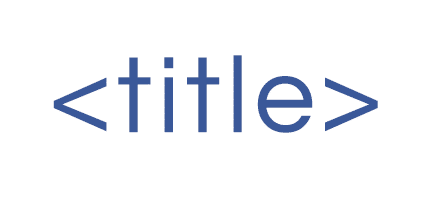You wrote an extraordinary piece of content for a new dog training product you’re about to unleash (ahem).
You also gave it a wicked awesome H1 tag (or so you think). Concise and optimized.
The only things left are the title tag and the meta description. You’re a little stuck because even though all your site content is compelling, interesting, and unique, you’re not getting the traffic you expected or hoped for.
You’re wise to stop where you are and do some research on writing title tags and meta descriptions that will actually convert.
In total, only a handful of words comprise both tags. It really shouldn’t be that difficult to choose the right ones. But that’s precisely why it’s difficult. Not only that, but you also have to include the right keywords so Google will relevantly index your page.
This guide will help you write clickable title tags and meta descriptions.
You might be asking, why should we look at both simultaneously?
Let’s review each one separately for a better understanding.
What Is A Title Tag?
A title tag is the fastest way for a reader to recognize relevant (or irrelevant) content.
Technically, a title tag is a line of code that surrounds the title statement, which we can see through “view page source” when we right-click on any webpage.
Title tags appear in three key places: the SERP, the web browser, and social networks. The SERP and social networks concern us the most because they’re what people see before they decide to visit your page.
What is a Meta Tag?
A meta tag is a brief description of an article that appears in the SERP and social media. It’s what people read after being drawn in by a great title tag.
While Google has stated that it’s not used as a ranking factor, it will influence the click-through rate through the less technical SEO strategy of User Experience (UX).
Now, let’s return to the previous question:
Why Title Tags & Meta Descriptions Belong Together
The first thing someone sees in the SERP is your page title. If your title is compelling enough, they’ll probably click right away. Most times though, they’ll check out the meta description before they click because they’re looking for a little reinforcement that leaving the SERP for another page will give them what they want.
Most of us are afraid of commitment. Even very small pseudo-commitments like the one required when we click on a link that will take us away from the page we’re on to another one. There are thousands of micro impulses firing off that move us toward clicking or continuing to scroll.
I won’t get into the meta psychology of decision making, but it’s enough to know that a great title tag isn’t enough. It’s just the free bread and butter. You need to back it up with a mouthwatering appetizer that’ll make their decision to click on through to your page a no-brainer.
Your title should grab their attention. Your meta tag should reinforce that attraction and compel them to click.
Know that we know the What and the Why, let’s get into the How.
READ THIS QUICK TIP:
A great title tag and meta description is really about writing skills. Now people study writing, practice for years to become better so I’m not going to lie and say that just anyone can write well and convincingly. That’s why expert copywriters are in such high demand. However, a few tricks will go a long way.
How to Write a Title Tag
Punch ‘em with your words.
You want in your title what just about everybody wants in their lives: Power. Just type any keyword into the search bar and see all the boring, totally uninspiring titles that appear. If that doesn’t motivate you to make yours pack more punch, then maybe you should hire a copywriter (cause the good ones LOVE doing that stuff). Remember, power words are simple because they’re understandable and easy to remember.
Keep it short.
60 characters is about your limit, which is roughly 10 words. I argue that’s even too much. The title of this article is verging on too long and it’s only 7 words plus 2 ampersands.
Use a keyword.
Use one or two main keywords, if it makes sense, without stuffing or repeating. It should blend naturally into a sensible statement.
Make it unique.
There are a ton of title generators out there, which spit out clever title ideas, none of which are unique in structure. While they’re easy to fall back on when you’re stuck, I recommend using the best title generator created: your brain. This is your best chance at producing a unique title. If you’re stuck, write the content first. In many cases, the title writes itself. If you’re still stuck, brainstorm a flurry of related words then look at how those words fit together. If your brand is powerful, include at the end.
Write it for the reader.
Write your title, then dumbify it. In her popular course The Copy Cure, Marie Forleo suggests using the “blockhead method”, which is essentially dumbifying your title over and over and over, like you’re trying to explain what your article is about to a not-so-bright friend. I’m not suggesting your readers are dumb, only that “quick-and-easy” is the best way to serve up any kind of information if you want people to read it.
Make it relevant.
This seems obvious, but it’s often overlooked. Remember what people type in the search bar and use that to guide you. “Dog training” while in the right category, doesn’t let us know if it’s relevant to our search. What about dog training? Tips? Tutorials? Products? Schools?
Although this falls a little outside of relevancy boundaries, I recommend writing your title as a proper sentence with a verb. For those of you who skipped too many English grammar classes, verbs are action words and when used correctly, they inspire people to act, which in this case, is clicking.
How to Write a Meta Description
Make it clear, convincing, and compelling.
Avoid sounding like a greasy marketer whenever possible. Be upfront and honest and use simple, non-slimy words to show rather than tell people what the article is about. Remember, you’re writing a brief description, not an ad.
Create curiosity.
But don’t give it all away. Leave room for a little intrigue. Example: “Make training your pup a cinch with this #1 dog training command. Hint: it’s not sit or stay.”
Keep it short.
You have more wiggle room than you do with a title tag but 160 characters, or 30 words is about the max (the previous example is only 93 characters, or 18 words).
Use keywords.
A couple of juicy long-tails could slide in here quite nicely if you’re strategic about it. Even if meta tags aren’t ranked (which we don’t really know for sure), people still want to see familiar keywords that reflect what they’re looking for.
Use rich snippets.
Also called schema markup, rich snippets are pieces of code that you include in the HTML content on your site page to make it more informative. They more richly describe what your page is about because they contextualize the content so it’s meaningful.
You’re probably wondering if rich snippets make a difference in SEO. According to Search Engine Land, they don’t:
“While structured data markup for rich snippets does not work as a ranking signal, it can generate indirect SEO benefits by making your page more easily indexable and providing more accurate and targeted metadata. … Rich snippets help you achieve this by pre-qualifying visitors.”
According to other experts, they do, but Google puts them through a somewhat vague incubation period until they pass. But one thing’s certain, like meta tags in general, they make for a better user experience.
You Don’t Have To Do It All Yourself!
Writing great title tags and meta descriptions doesn’t require an expert, but it certainly helps. Even if you do decide to hire a copywriter to do the creative work for you, it’s still wise to know what each should contain and why.
I hope you got what you needed from this guide. Please feel free to leave comments or ask questions. We always want to hear from you. And if you’re looking for an expert copywriter, let us know and we’ll hook you up.
Logging out,
Logical Mix









